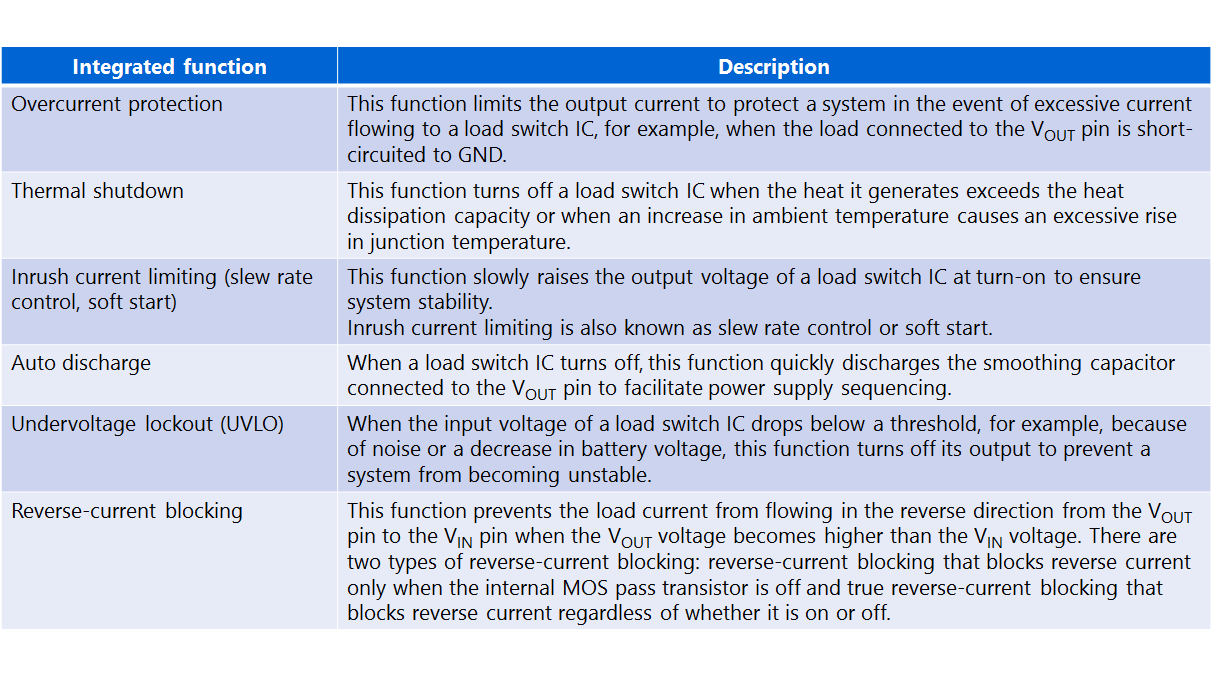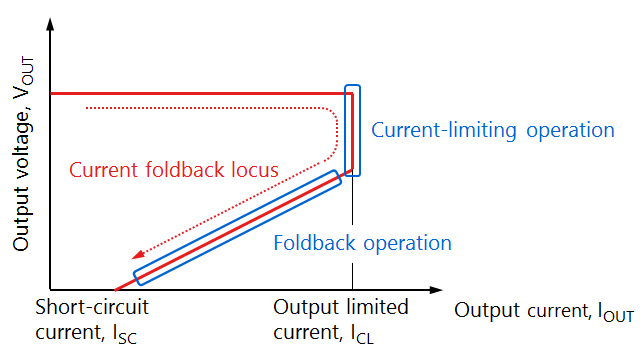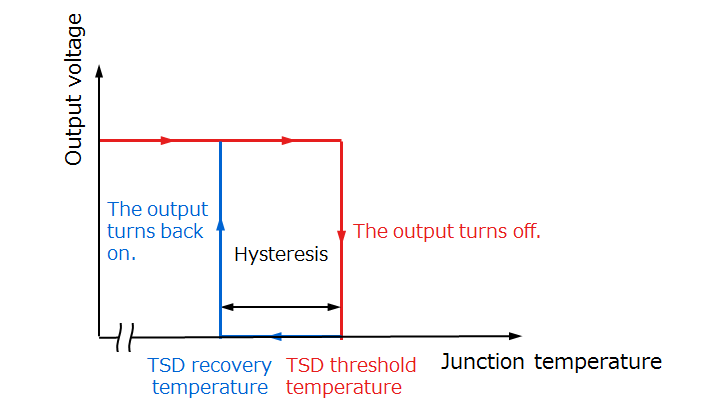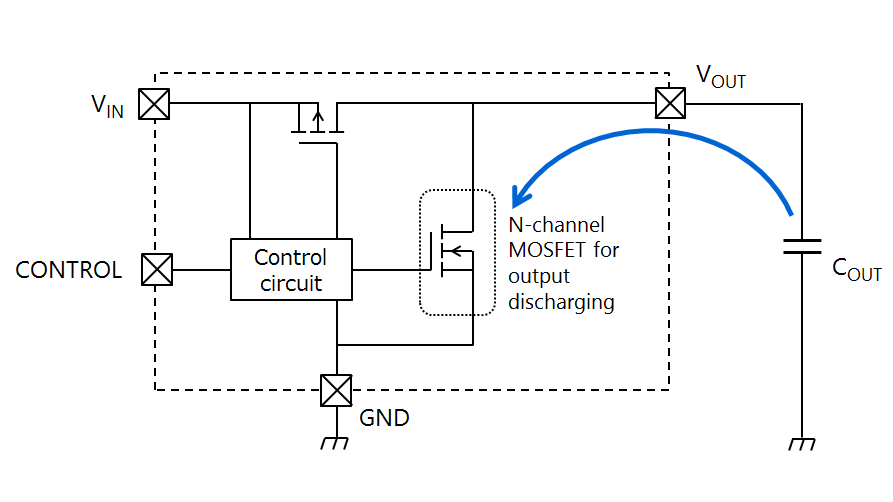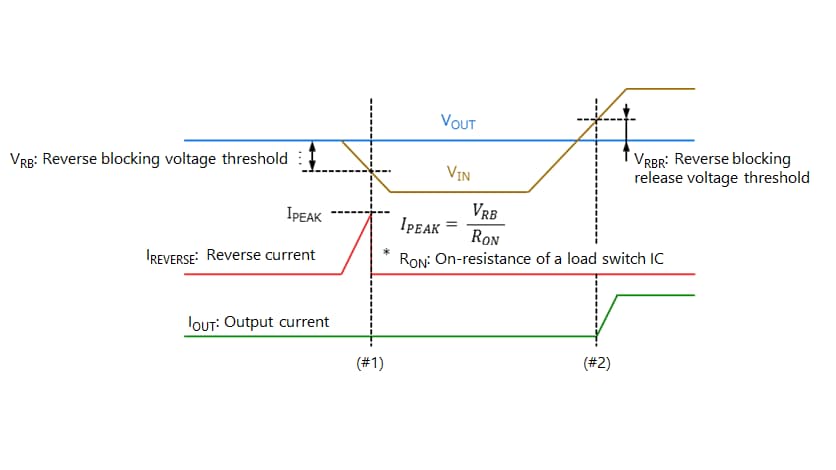- General Top
- SEMICONDUCTOR
- STORAGE
- COMPANY
-
My ToshibaSemicon
- Semiconductor Top
-
ApplicationsAutomotive
Body Electronics
xEV
In-Vehicle Infotainment
Advanced Driver-Assistance Systems (ADAS)
Chassis
IndustrialInfrastructure
BEMS/HEMS
Factory Automation
Commercial Equipment
Consumer/PersonalIoT Equipment
Healthcare
Wearable Device
Mobile
Computer Peripherals
-
ProductsAutomotive Devices
Discrete Semiconductor
Diodes
Transistors
Logic ICs
Analog Devices
Digital Devices
Wireless Devices
※
: Products list (parametric search)
Power SemiconductorsSiC Power Devices
※
: Products list (parametric search)
Isolators/Solid State RelaysPhotocouplers
Digital Isolators
Solid State Relays
Fiber Optic Transmitting Modules
※
: Products list (parametric search)
MOSFETsIGBTs/IEGTsBipolar Transistors※
: Products list (parametric search)
Diodes※
: Products list (parametric search)
MicrocontrollersMotor Driver ICsIntelligent Power ICs※
: Products list (parametric search)
Power Management ICsLinear ICs※
: Products list (parametric search)
General Purpose Logic ICsLinear Image SensorsOther Product ICsOther Product ICs
※
: Products list (parametric search)
-
Design & Development
-
Knowledge
- Where To Buy
- Part Number & Keyword Search
- Cross Reference Search
- Parametric Search
- Stock Check & Purchase
This webpage doesn't work with Internet Explorer. Please use the latest version of Google Chrome, Microsoft Edge, Mozilla Firefox or Safari.
require 3 characters or more. Search for multiple part numbers fromhere.
The information presented in this cross reference is based on TOSHIBA's selection criteria and should be treated as a suggestion only. Please carefully review the latest versions of all relevant information on the TOSHIBA products, including without limitation data sheets and validate all operating parameters of the TOSHIBA products to ensure that the suggested TOSHIBA products are truly compatible with your design and application.Please note that this cross reference is based on TOSHIBA's estimate of compatibility with other manufacturers' products, based on other manufacturers' published data, at the time the data was collected.TOSHIBA is not responsible for any incorrect or incomplete information. Information is subject to change at any time without notice.
require 3 characters or more.
2-4. Inrush current reducing
The inrush current limiting function controls the slew rate to reduce inrush current.
Once a load switch IC turns on, its output voltage increases instantaneously, causing overshoot that might exceed the rated voltage of the load IC or circuit.
In addition, a large inrush current flows into the load switch IC to charge the output smoothing capacitor connected to the VOUT pin. Inrush current occurs during the period from the time when the load switch IC turns on to the time when the output voltage stabilizes. If the VIN pin is connected with a board trace with large impedance, the input voltage might sag because of a voltage drop that occurs across the trace impedance due to inrush current. This makes the load switch IC unable to provide a normal output voltage level.
After the load switch IC turns on, the inrush current limiting function raises the output current slowly to limit the inrush current, thereby suppressing the output voltage overshoot and the input voltage drop. Therefore, inrush current limiting helps improve system stability.
Inrush current limiting is also called slew rate control or soft start.
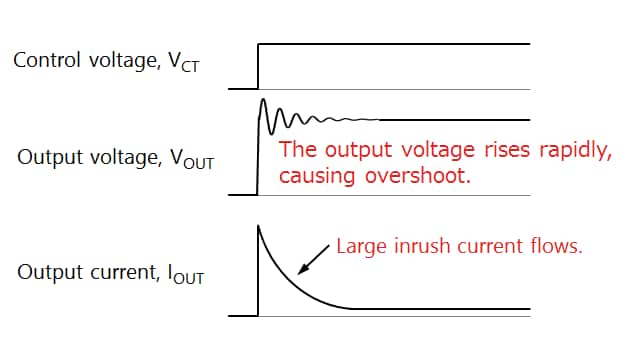

The following links also provide descriptions of inrush current limiting:
Application note: Basics of Load Switch ICs
FAQ: How can I suppress inrush current with a load switch IC?
Chapter2 Convenient functions load switch ICs
Related information
- Products
Load Switch ICs - Applidcation Notes
Application Notes - FAQs
Load Switch ICs - Parametric Search
Parametric search - Stock Check & Purchase
Stock Check & Purchase


